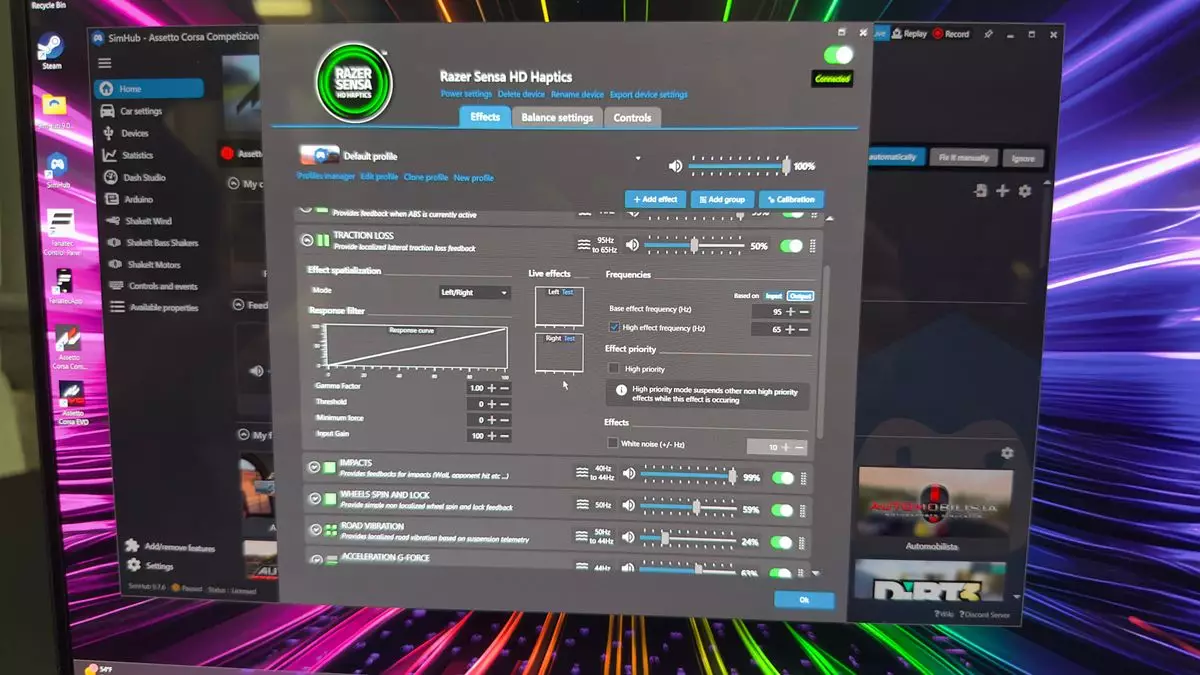The gaming industry is no stranger to innovation, continuously pushing the boundaries of what players can experience. Among the standout technologies that have emerged recently is haptic feedback, which adds a new dimension to gaming by providing tactile sensations that correspond with on-screen action. Last year, Razer made waves with their groundbreaking products—the Freyja seat pad and the Kraken V4 Pro headset—both of which promise to change the game. As a devoted gamer and tech enthusiast, I’ve observed that while the Kraken V4 Pro impresses on many levels, its pricing can be daunting. The Freyja, however, offers a more nuanced discussion regarding its practical application in gaming experiences.
Breaking Down the Products: Kraken V4 Pro and Freyja
Razer’s Kraken V4 Pro headset stands out not just for its auditory capabilities but also its ability to relay physical sensations through sound. Its steep price, however, makes it less accessible to the average consumer. On the other hand, the Freyja seat pad brings a unique twist by providing haptic feedback through vibrations. This begs the question: how much difference does vibration truly make in enhancing gameplay? After an enlightening hands-on experience, especially in a sim racing context, I’ve found that the true allure of these products lies in how they work together to transform the gaming experience.
Using them in tandem during the Global Game Developers Conference (GDC) 2025, I delved deep into a simulation of Assetto Corsa Competizione. Initially, the vibrations felt overwhelming as I attempted to find my rhythm in a Lamborghini. Yet, as gameplay progressed, I realized that these sensations aided my performance in ways I could not have anticipated. The subtle feedback remodeled my perception of speed, traction, and handling, allowing me to drive in a more instinctive manner.
The Sim Racing Connection: Ideal Use Cases
If there’s one genre where haptic feedback rises to the forefront, it’s sim racing. The synergy between the Freyja seat pad and the Kraken V4 Pro headset shines particularly bright in this genre. The nuances of acceleration, braking, and cornering sensations become palpable, transcending mere visual and auditory cues. This combination not only enhances overall immersion but surprisingly improves gameplay. As I became attuned to the feedback, I found that I could detect braking points and understeering issues more acutely than before. Rather than relying purely on auditory feedback, I began ‘feeling’ the track.
However, it’s essential to recognize the limitations of haptic technology. No matter how advanced these systems become, they cannot replicate the actual forces encountered while racing. Yet, the degree of immersion provided—giving gamers an opportunity to sense rather than just hear—can be profoundly captivating. The question then arises: how far can Razer take this technology? Would a full-motion racing seat that integrates the Freyja’s feedback capabilities enhance the experience even further? My interactions hinted at a bright future for such innovations, despite the current limitations.
Navigating Market Challenges: A Niche Yet Promising Sector
While sim racing has a passionate community, it remains a niche in the greater gaming ecosystem. Razer’s journey towards integrating advanced haptic devices into this sector is fraught with challenges. The market for high-end sim racing equipment is already saturated with expensive options, raising concerns about the feasibility of a full Freyja racing seat. The investment required to develop and market such a product could lead to steep prices that may alienate potential buyers.
Moreover, while the technology garners attention at events like GDC, translating that interest into retail success is another hurdle. There’s a delicate balance between creating an innovative product and ensuring it appeals to a broader audience. Potential buyers may hesitate to invest in an expensive haptic system if the perceived value against existing options isn’t compelling enough.
Future Innovations: The Wyvrn SDK
Exciting developments also emerged from the GDC, with Razer announcing the Wyvrn software development kit (SDK). This unifying platform will allow developers to streamline the integration of various Razer peripherals, ensuring that future racing games are optimized for systems like the Freyja and Kraken. This symbiosis between hardware and software could open new avenues for sensory feedback in gaming, giving rise to rich experiences that were previously unattainable.
As gaming technology advances, haptic feedback systems like the ones Razer provides will likely become prevalent, transforming not just the sim racing niche but also the broader gaming landscape. The excitement for such innovations is palpable, but as a gamer without access to such technology, I’m left with a mixed sense of enthusiasm and wistfulness—a drive to experience these advancements firsthand while recognizing the limitations current setups have.

